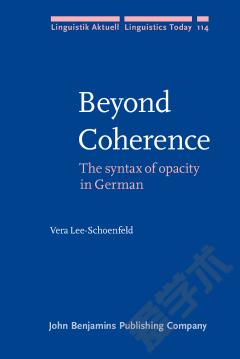The Semantics of German Verb Prefixes.
The Semantics of German Verb Prefixes is the most comprehensive study ever undertaken in this area of German grammar. Using an extensive collection of naturally occurring data, the author proposes an image-schematic interpretation for each of the productive prefixes be-, ver-, er-, ent-, zer-, um-, uber-, unter-, and durch- . These abstract semantic patterns underlie a remarkable range of particular meanings, and they consistently account for subtle contrasts between prefixed verbs and alternative constructions such as simple verbs, particle verbs, and verbs with other prefixes. Furthermore, the author develops a schematic meaning for the prefixed verb construction itself. This grammatical meaning reflects the interpreterâs perspective and attentional focus as the objective event is imagined to unfold. Underlying all of these proposals is a novel conception of meaning as a dynamic and flexible process with a constantly active role for the interpreter. This volume will be of great value to cognitive linguists as well as scholars and students of German who want to gain insights into a central and puzzling part of the morphosyntax and semantics of the German language.
{{comment.content}}








 京公网安备 11010802027623号
京公网安备 11010802027623号